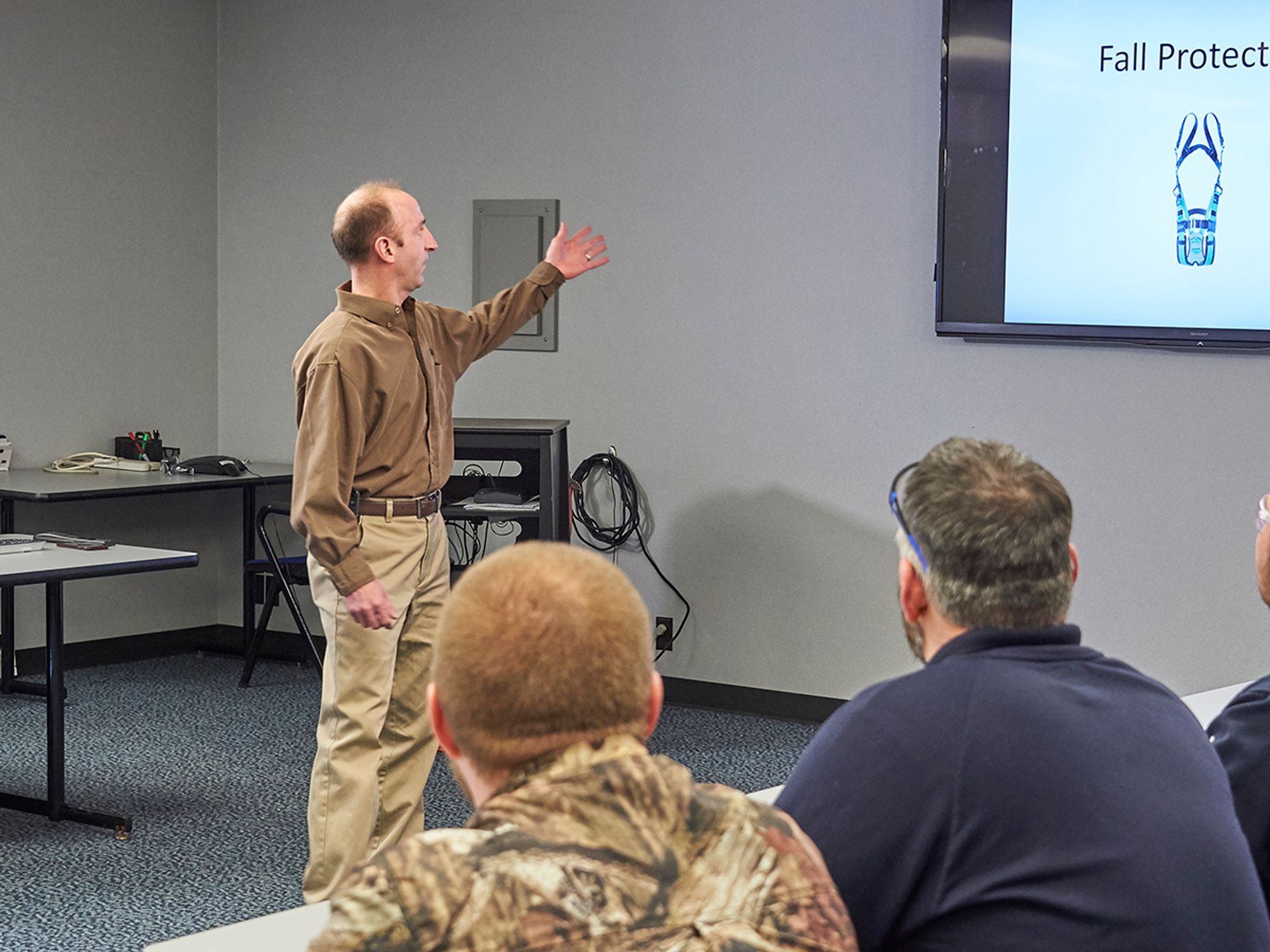Who must conduct the training?

- Training must be conducted by a qualified person who has a degree, certificate or professional standing, or extensive knowledge of and experience in the subject matter.
The trainer (i.e., qualified person) must have a degree, certificate, or professional standing OR extensive knowledge, training, and experience to solve or resolve problems relating to:
- The subject matter (e.g., how to use personal fall protection, designated areas, ladder safety systems, etc.),
- The work (e.g., working on a roof), or
- The project.
The Occupational Safety and Health Administration (OSHA) is clear that trainers do not have to possess a degree if they have the necessary knowledge, training, and experience to be qualified.
Also, OSHA says that a competent person is not a qualified person. OSHA believes that personnel “qualified” to train workers in all of the subjects and topics specified under 1910.30 must have the capabilities of qualified persons. These capabilities extend beyond the current definition of a competent person. A qualified person must meet a higher threshold of requirements than a competent person.
Nonetheless, OSHA believes that many employers can draw upon the knowledge and experience of their staffs to provide effective training. Crew chiefs, supervisors, operations personnel, and other individuals at a facility can train workers — provided they have the necessary degree or extensive knowledge, training, and experience. Employers may use outside personnel to train workers if, again, the trainer is a “qualified person.”
